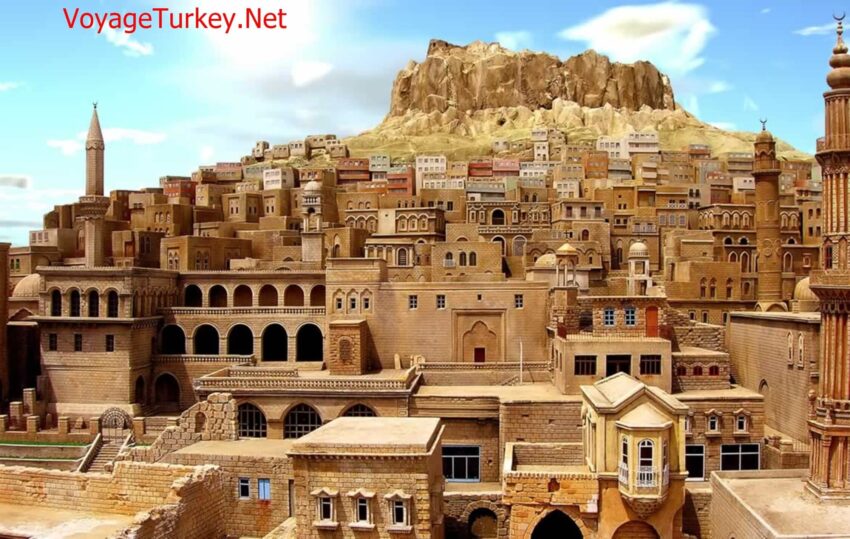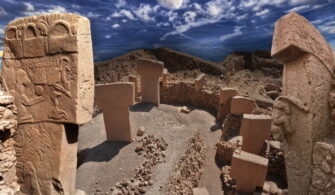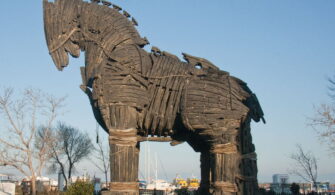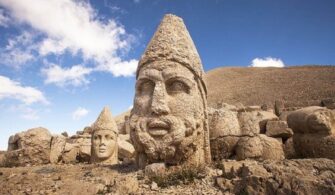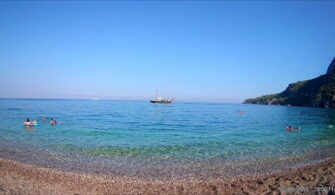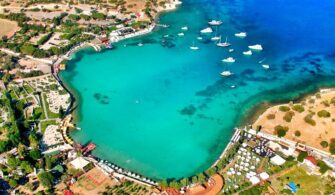Tur Abdin Region
Tur Abdin Region is the name given to a mystical region in Southeast Turkey, which includes some districts of Mardin Province, some districts of Batman Province, and İdil and Cizre Districts of Şırnak Province.
This region in Upper Mesopotamia has a mystical atmosphere due to the 80 monasteries and churches established in the region since the 4th century BC. Because of this feature, the region is considered sacred by the Assyrians. Numerous historical churches and monasteries in the area make this area a center of attraction for history buffs.
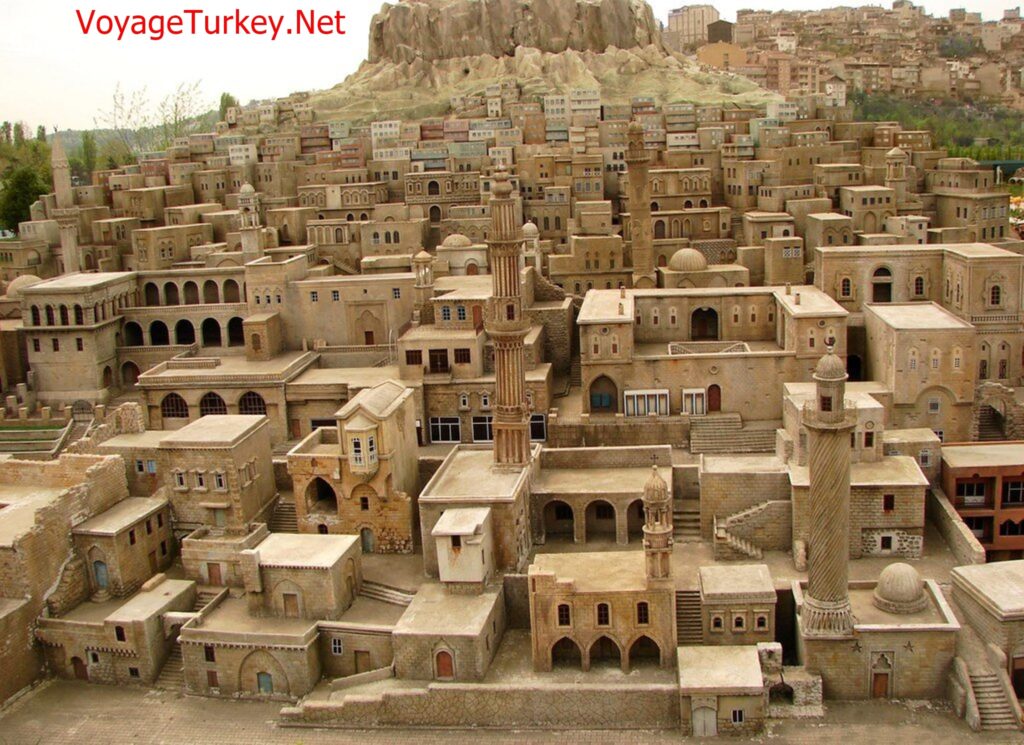
Mesopotamia
The Mesopotamian Region, including the Tur Abdin region, is the name given to the geographical area between the Euphrates and Tigris rivers by the ancient Greeks and Romans. This region was named as Al-Jazeera by the Arabs.
The buildings in the region are among the best examples of stonework. The region is also worth a visit because it contains many Assyrian churches and monasteries. Stone carving and cut stone art are one of the leading handicrafts of the Assyrians, one of the ancient peoples of the region. Stone carving, an art that passed from father to son in the Assyrians, makes itself felt in the structures in this region..
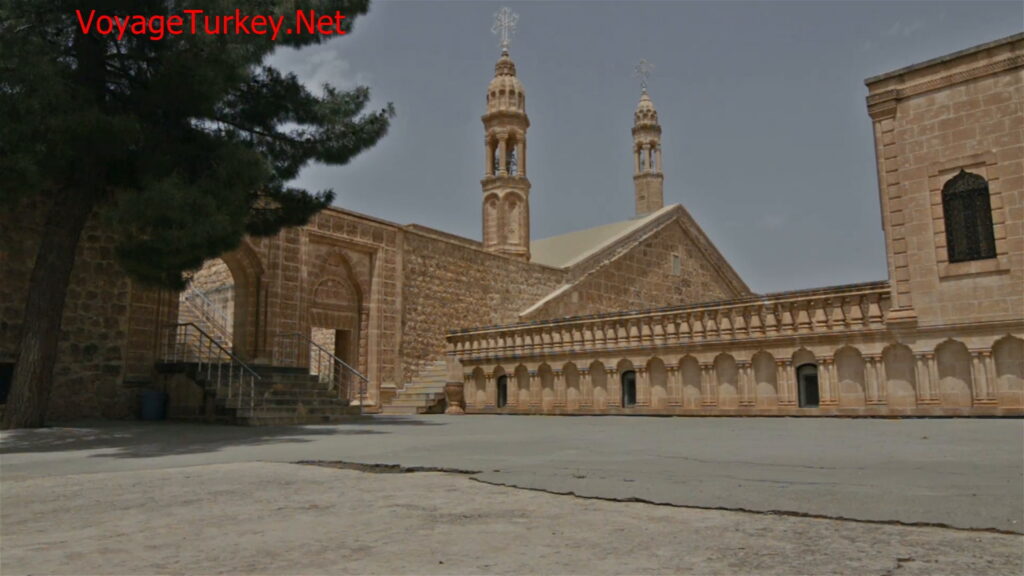
The architectural features of the stone structures that stand out in the Tur Abidin region, especially in the settlements inhabited by Christians, are very rich and eye-catching in terms of art history.
The art of stone processing can be seen not only in Christians, but also in Muslim religious places. After the region was dominated by Muslim states, various mosques and madrasahs were built. The religious structures belonging to Muslims such as Kasımiye Madrasah, Zinciriye Madrasah and Şehidiye Madrasah in the region are also the best examples of the art of stone processing.

These churches, monasteries and mosques, where the best examples of stonework are exhibited, are fascinating.
Mardin Province and Midyat District, which are all declared as protected areas, are located in this region. In these cities, it is very easy to recognize the impact of stonework on the architectural field with the naked eye. Original examples of the art of stone carving can be seen in the Assyrian houses and churches in and around Mardin. Doors, windows, columns, arches are decorated with fine examples of stonework such as needlework.
Origin of the words ‘Tur Abdin’
There are different views on the origin and meaning of the word ‘Tur Abdin’. The first of these assumes that the word ‘Tur’ in Assyrian means ‘mountain’ and the word ‘Abdin’ means servants, and therefore Tur Abdin means ‘Servants Mountain’. In this view, the monks living in the monasteries were accepted as servants of God, and the region was named Tur Abdin (Mount Servants).
The second view assumes that the word ‘Tur’ in Assyrian means ‘mountain’ and the word ‘Abdin’ means ‘Kullar’ and thus Tur Abdin means ‘Mount of Kullar’.
Borders of the Tur Abdin Region
Tur Abdin region located in the southeastern Anatolia region of Turkey is a mountainous plateau that includes districts like Mardin, Midyat, Savur, Gercüs, and Hasankeyf. Located in Upper Mesopotamia, this region starts from west to east from Mardin to Cizre. This mountain range, now known as the Mardin Threshold, was named Masius in the Classical Age and Tur Abdin in the Middle Ages.
map
Located on the Silk Road route, the Tur Abdin region is surrounded by the cities of Mardin (Merde) in the west, Hasankeyf (Hesno d’Kifo) in the north, Cizre (Gozarto d’Şu’o) in the east, and Nusaybin (Nsibin) in the south, and Midyat is the central city.
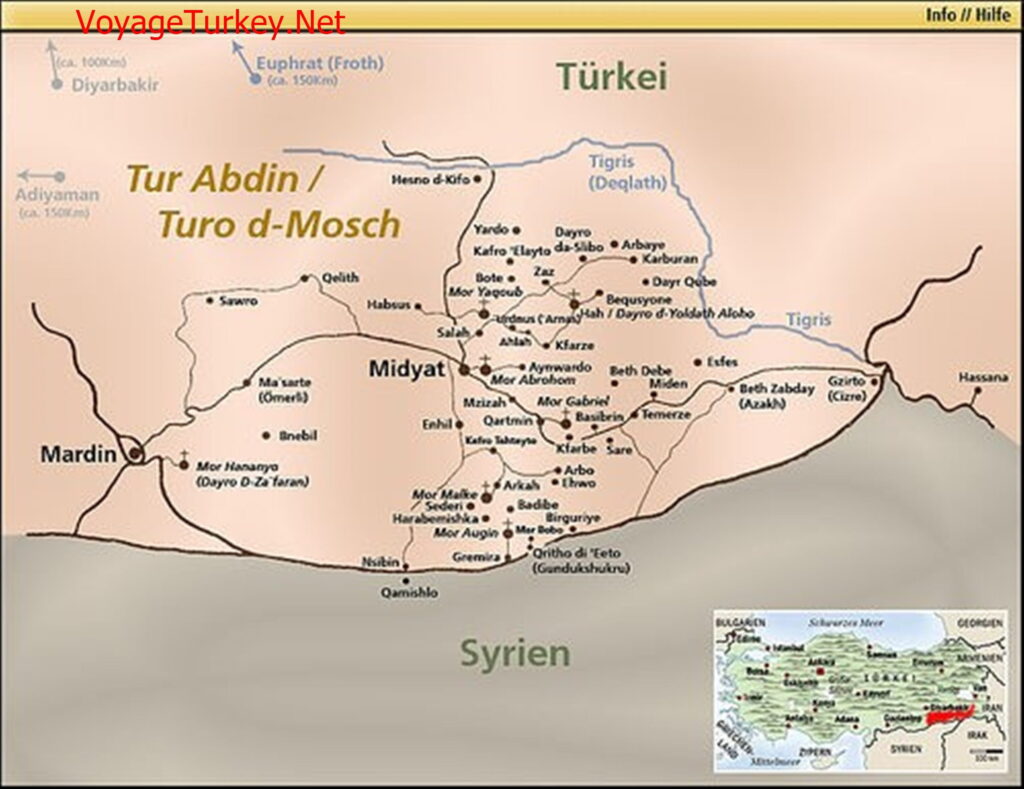
Hasankeyf and Gercüş district centers of Batman Province and all settlements connected to these two districts, all districts and settlements of Mardin province, İdil and Cizre districts of Şırnak province and settlements connected to these districts are accepted within the borders of Tur Abidin Region.
History of the Tur Abdin Region
It is estimated that the region has been inhabited since the 4th millennium BC. The region was dominated by the Sumerian-Akkadian civilization in the second half of the 4th millennium BC, and by the Huri-Mittanni Kingdom in the third millennium BC. The Hittites put an end to the sovereignty of the Hurri-Mittani Kingdom in the 14th century BC.
After the Hittites, the region was dominated by the Aramis in the 12th century BC and the Assyrians in the 10th century BC. The region, which was dominated by Persians in 539 BC, was ruled by Persians until Alexander the Great conquered the region. The region, which was conquered by Alexander of Macedonia in 331 BC, passed under the administration of the Seleucid Empire until 140 BC after the death of Alexander.
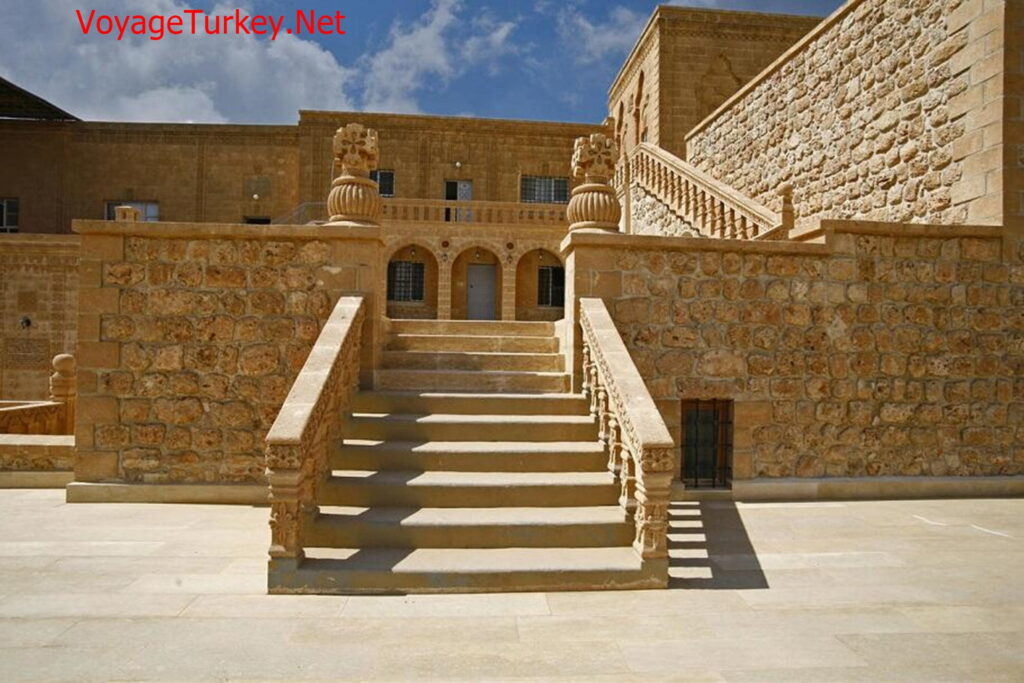
The region, which was under the domination of Part (Arsakid) since 140 BC, remained under the rule of the Armenian King Tigran the Great between 85 and 69 BC. After Tigran’s brief rule, the region became a battleground between Persians and Romans. Until the early conquest of Islam in the early seventh century, the region became a battleground between the Romans (later Byzantines) and the Parthians (later Sassanids).
When this struggle was concluded in favor of the Roman Empire, the Tur Abdin region remained under Roman rule for a long time. When the integration of Christianity with the political system of the state was realized in the Council of Nicaea, which was convened by Constantine the Great in 325, Christianity became the dominant element in the Tur Abdin region.

The conquest of the Islamic armies in the 7th century resulted in the deletion of the Persian Empire from the stage of history and the removal of the Roman Empire from the region in order to never return.
The region has always been dominated by Muslim states after this date.
Assyrians
For an article about Syriacs, please click the link below:
Syriacs (Assyrians): Lost Nation of Tur Abdin Region in Turkey
Mardin and Its District
Mardin City Center
Mardin is located in Southeastern Anatolia Region. It is surrounded by Şırnak and Siirt in the east, Şanlıurfa in the west, Diyarbakır and Batman in the north, and Syria in the south. Not only in the city center but also in many districts, there are historical monuments that must be seen.

Historical monuments to be seen in Mardin city center: Kasımiye Madrasa, Şeyh Çabuk Mosque, Kırklar Church (Mor Behnam Church), Mor Mihail Church (Burç Monastery), Mort (Saint) Şimuni Church or Monastery, Mor Petrus and Paul Church, Mor Cercis Church, Mor Iliyo Church, Deyrul Zafaran Monastery, Mor Izozoel Monastery, Virgin Mary Monastery, Mort Smuni Church and Mor İvennis Church, Mor Behnam Monastery, Mardin Museum, Latifiye Mosque, Ulucami, Kayseriye Passage, Revakli Bazaar, Hatuniye Madrasa, Savurkapı Bath, Melik Mahmut Mosque, Artuklu Caravanserai, Firdevs Pavilion, Dara Ancient City
Midyat District, Mardin Province
Midyat, which is located in the center of the Tûr Abdîn region, is a city that is based on historical antiquities which is subject to cuneiform sources.
Historical buildings in Midyat: Mor Gabriel (Deyrul-Umur) Monastery, Virgin Mary Monastery, Mor Yakub Monastery, Mort Shimuni Church, Mor Barsavmo Church, Mor Sharbel Church, Mor Eschayo Church, Mor Sobo Church, Mor Hadsobabo Church, Mor Izozoel Church, Mor Iliyo Church, Midyat State Guest House, Gelüşke Han, Gümüşçüler Bazaar, Estel Han.
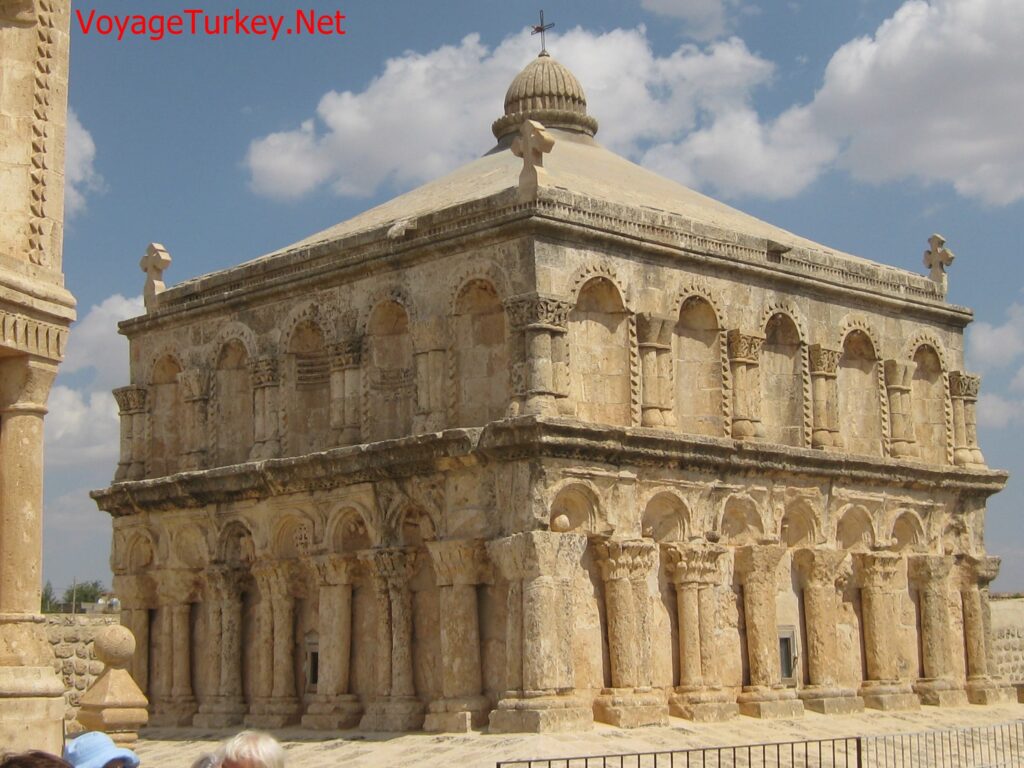
Nusaybin District, Mardin Province
Nusaybin, which is connected to Mardin Province and established on a plain, is one of the oldest settlements of Upper Mesopotamia.
The district, which has hosted many civilizations in history, was used as a capital by the Sassanids for a period.
Historical buildings in Midyat: Mor Yakup Church, Mor Eþsa’yo Church, Mor Melke Monastery, Zeynelabidin Mausoleum, Beyaz Su (White Water) Recreation Area
Ömerli District, Mardin
The former name of the town of Ömerli, Mazharte, is a Syriac word and is a name given to a superficial pond, one and a half meters long and one meter wide, in which grapes are squeezed. It is thought that the reason of giving the name Mazharte to the district stems from the abundance of vineyards.
Savur District, Mardin Province
In Savur, Christianity began to spread in the middle of the 1st century and the city became an Episcopal region in 352.
In Savur District, Abdullah Bey Mansion Savur Castle, Mor Yuhanon Church are worth seeing.
Yeşilli District, Mardin Province
Yeşilli, located in the northeast of the center of Mardin, is a district famous for its promenade places in a green valley. There are water canals, fountains, embankments and mills dating from the Romans. Mor Yakup and Mor Kuryakos Church are among the must-see buildings.
Batman Province
Hasankeyf District, Batman Province
Coming soon..
Gercüş District, Batman Province
Coming soon..
Şırnak Province
İdil District, Batman Province
Coming soon..
Cizre District, Batman Province
Coming soon..
Is it safe to travel to Mardin Turkey?
I think traveling to Batman, Mardin and Districts is very safe. Due to some security problems, security checks are carried out by soldiers and police on highways. However, there is no security risk in Mardin and Batman city center and districts.
How to get to Mardin or Batman
There is an airport in Mardin. Flights from Ankara, Istanbul, and Izmir to the airport are available on certain days of the week.
In addition, there is an airport in Diyarbakır Province, which is approximately 100 km from Mardin. There are also flights from Ankara, Istanbul, and Izmir to the airport on certain days of the week. There are regular bus services from Diyarbakır airport to Mardin.
There is also an airport in Batman Province Center. Flights from Ankara, Istanbul, and Izmir to the airport are available on certain days of the week.
When to go Mardin and Batman
Batman and Mardin’s weather can vary wildly from season to season, regularly rising above 40 ° C in summer and dropping well below freezing in winter. The best season to visit is spring, when the plains below are in green and the flowers are in bloom in the churchyards; If you visit around Orthodox Easter you may be able to witness some of the celebrations. Autumn can also be pleasantly cool, with long crisp evenings.

Where to stay Mardin and Batman
ERDOBA ELEGANCE HOTEL http://www.erdobaelegance.com, Mardin City Center, Tel: 212 15 00
HILTON GARDEN INN, https://hilton.com.tr/en/ Hilton – Garden – Inn – Mardin, Mardin City Center, Tel: 2139600
GREAT MARDIN HOTEL, www.buyukmardinoteli.com.tr, Mardin City Center, Tel: 213 10 47 4
BİLEM HOTEL www.bilemhotel.net, Mardin City Center, Tel: 212 55 68
ARTUKLU CARAVANSARAYI www. artuklu.com/ Specialty Lodging Mardin City Center, Tel: 213 73 53
ERDOBA HOUSES OTTOMAN MANSION www.erdoba.com.tr Mardin City Center, Tel: 212 76 77
ZİNCİRİYE HOTEL www.zinciriye.com, Mardin City Center, Tel: 212 48 66
MATIAT HOTEL www.matiat.com.tr, Midyat City Center, Tel: 462 59 20
Handicrafts and Gift Items
Filigree
One of the important arts that Assyrians have lived for centuries is filigree.
Must Be Tasted Things
Syriac Wines
Syriacs were successful in many arts as well as in agriculture and viticulture. They had large vineyards, especially in Midyat and Adıyaman regions. Syriacs produced wine in their homes for centuries. Later, they continued this business professionally and established wine factories. Today, wine is produced only in Mardin and Midyat.
Mardin Kebab
One of the best dishes to eat in Mardin is Mardin kebab
Mardin kebab is prepared by turning meat into minced meat by using large knives called armor. Kebab lamb and milk calf are made by kneading with 20 percent tail oil.
here are 2 versions of Mardin kebab, which are painful and painless. Hot chili pepper joins the spicy version.
Kebab cooked in barbecue is served with baked tomatoes and peppers.
